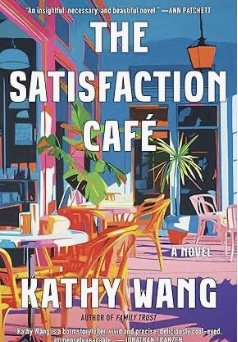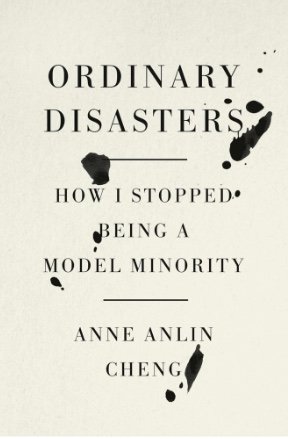The Satisfaction Cafe by Kathy Wang (Simon & Schuster, release date July 2025)
Joan Liang “was married for only six weeks before she stabbed her husband.”
She had never expected to do that but then she had never expected that, in the pornography section of their local video store, her husband would hit her when she refuses to bestow sexual favors upon him under the eyes of his best friend. After the second blow strikes her face, Joan pulls out a pair of calipers that she had just purchased at an art store, rakes her husband across the cheek, and announces “I want a divorce.”
While growing up in Taiwan, before she came to Palo Alto to get a master’s at Stanford, Joan had encountered married women, including her mother, who “were melancholy, if not outright miserable.” When she calls her parents to tell them her marriage has ended, they see this as confirmation of the disappointment Joan has been to them since the day she was born a girl. After her mother hangs up on her, Joan realizes the punitive power of what her parents think of her has been “blurred by distance.” She resumes her life of studying, working as a hostess at a Chinese restaurant, and doing light housekeeping for an elderly woman in exchange for an attic room.
Then one afternoon in a park, while listening to a raving man who appears so regularly that she’s given him a name, The Screamer, she meets Bill. Although he’s been married three times and is 51 years old to her 25, with adult children who are 24, Bill is “cultured, smart, and kind.” When he falls in love with her, Joan accepts his proposal.
She’s briefly taken aback when he sets up a prenuptial meeting for her with his attorney but Joan does her research and calmly sets her terms. For each year of the marriage she will receive a percentage of ownership in the architectural showcase that is Bill’s home, with it becoming legally hers in joint ownership after ten years of marriage. When Bill dies, they’ve been wedded for thirteen years and the house is Joan’s--but only for a short period. On the night of his father’s funeral, her stepson, enraged by losing his childhood home, finds a can of gasoline.
Joan takes refuge in another dream, one of opening a restaurant where people are nourished by conversation as well as food. When she finds that a building is for sale, the place that once held the video store where she had stabbed her husband and ended her first marriage, that dream begins to unfold.
Kathy Wang masterfully burnishes the writing class cliche “Show, don’t tell.” Readers are never given a description of Joan, not of her background, her looks, or her accomplishments. Bill tells her she is “beautiful, just absolutely lovely.” His attorney assesses her as “pretty enough,” but “would not do well at, say, a charity lunch.” When early in their relationship, Bill asks Joan how she mastered English, her response is that’s true of anyone in Taipei who goes to “a good school.” She attains her master’s degree in mathematics with this feat mentioned only in passing, and when she has children, she reveals her love for them by admitting to herself that if either were to die, “This was how God would break her heart.” Her equanimity is unshattered when Bill resumes his lifelong habit of infidelity and she realizes “No one gets perfect.”
Her one “shimmering bubble of fantasy” is revealed when she falls in love with Bill’s magnificent house, where she feels a warmth, as if the place was wrapping her in a hug.
What makes this woman unforgettable is her straightforward behavior, rooted in kindness, which turns her into a character who is lovable, yet never saccharine. From her Jane Eyre-like beginning, when she’s almost an orphan, living in an attic, to the final order she directs at her children, written on an index card: “BE NICE To EACH OTHER,” Joan’s life spins out with a well-considered cleanliness of action that is absolutely wonderful, in the truest sense of that word.~Janet Brown









